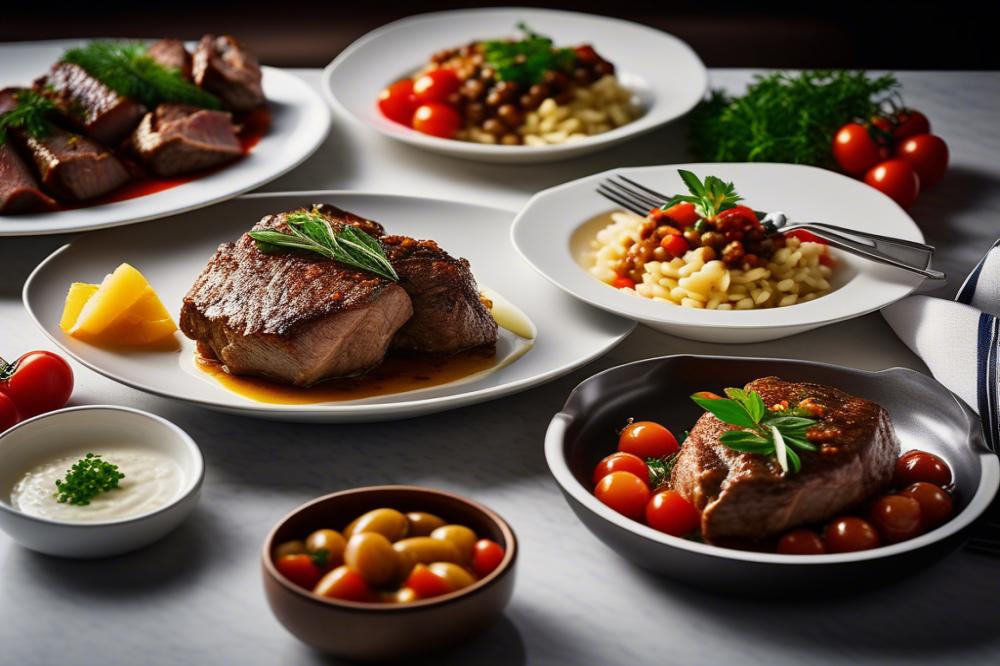The Art of Making authentic Greek authentic-ingredients”>Kleftiko Lamb
Explore the culinary treasures of Greece through the art of making authentic Greek Kleftiko lamb. This slow-cooked dish is more than just a meal; it embodies the spirit of Greek cuisine. A tantalizing blend of tender meat, Mediterranean herbs, garlic, and a splash of lemon creates a flavor explosion that satisfies the senses. Enthusiasts of traditional dishes praise its simplicity and depth.
Cooking this lamb is a ritual steeped in history. Families gather, sharing stories while preparing a delightful feast. The process takes time, but patience yields an unforgettable outcome. Each element plays a vital role, enhancing the dish’s overall taste. Mediterranean herbs infuse their unique essence, transforming the meat into something extraordinary.
Lemon cuts through the richness, balancing flavors perfectly. Garlic adds a robust note, harmonizing with the lamb. Often served with warm bread or fresh vegetables, this meal offers a complete dining experience. Serving Kleftiko becomes an occasion that brings loved ones together, forging memories around the table.
For those seeking an authentic recipe, it’s essential to embrace the slow-cooking method. Low temperatures allow the meat to break down, resulting in incredible tenderness. Whether it’s a family gathering or a quiet evening, the essence of Greek Lamb is a surefire way to impress.
History and Origins of Kleftiko
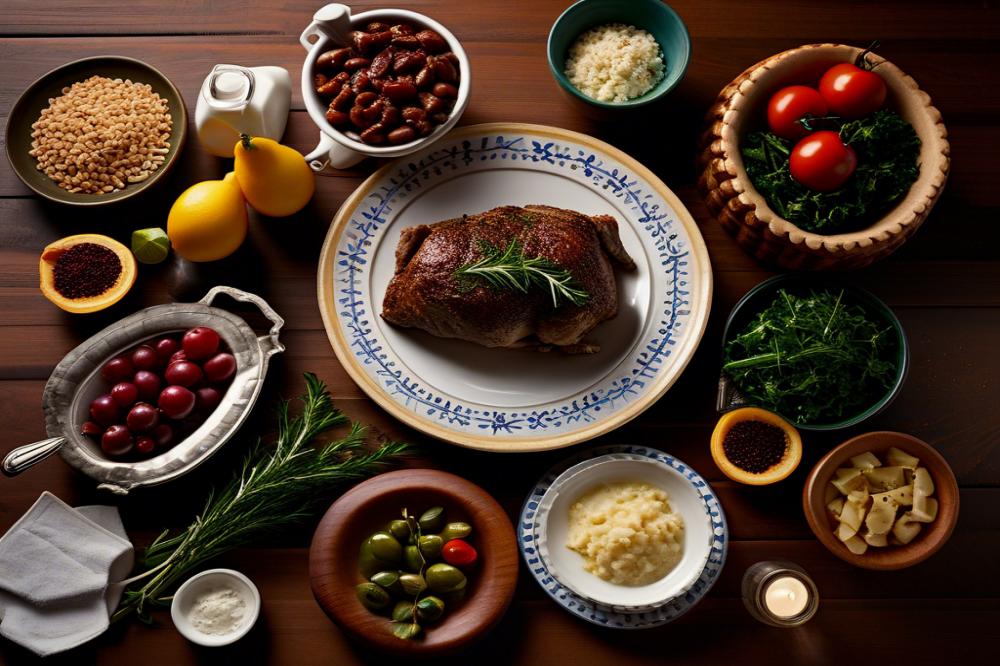
The story of Kleftiko is as rich as the flavors found in this authentic dish. Traditionally, this meal was prepared by Greek bandits, known as “kleftes.” They roamed the mountains during the Turkish occupation, living off the land and often stealing livestock. To cook their ill-gotten gains, they needed a method that would keep their activities a secret. Thus, slow-cooked lamb became their choice.
Wraps of lamb would go in a sealed parcel, often made from clay or foil. This technique allowed the meat to cook slowly, staying tender while hiding any smell from the open air. The use of fresh Mediterranean herbs, garlic, and a splash of lemon added flavor but also helped mask the scent of cooking. With time, the dish gained a place in the heart of Greek cuisine.
Once reserved for bandits, Kleftiko transformed into a popular dish that families now enjoy. It moved from the mountains to dining tables across Greece, maintaining its cultural significance. Preparing this recipe has become a festive occasion, bringing people together to share good food and stories.
While the origins link back to a time of hardship, the evolution of this meal showcases resilience and creativity. Ingredients may vary slightly by region, but the core remains the same. Whether cooked over a fire or in a modern oven, the unique flare of the dish continues to shine. Each bite brings forth history, tradition, and rich tastes that span generations.
Key Ingredients for Authentic Kleftiko
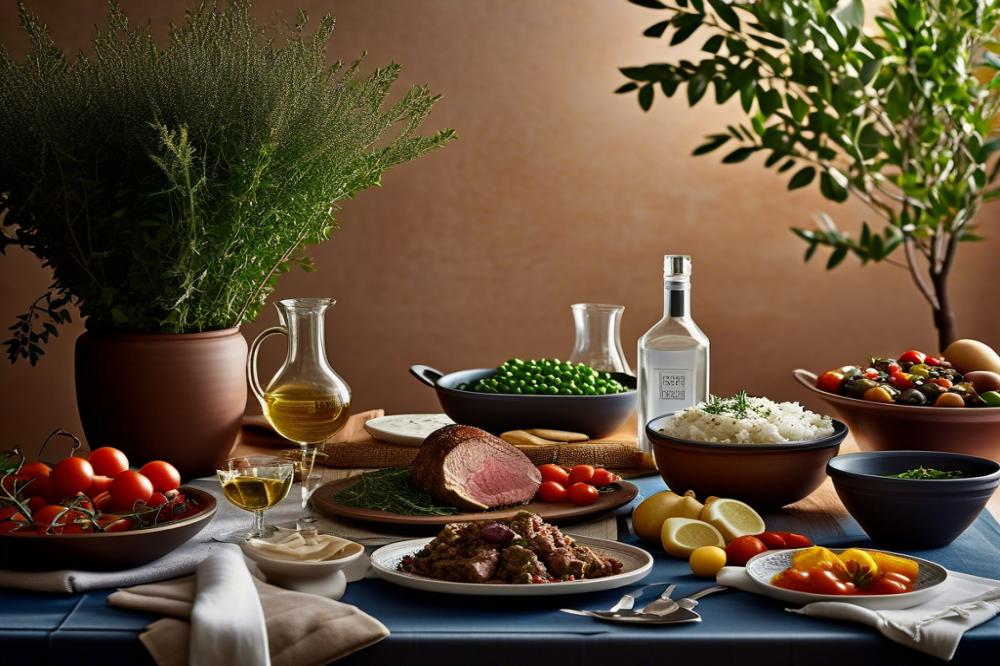
The foundation of authentic Kleftiko lies in the choice of high-quality lamb. Opting for meat that is both fresh and flavorful will dramatically impact the final dish. This slow-cooked recipe benefits from the natural richness of the lamb, which becomes incredibly tender as it cooks.
Herbs play a crucial role in capturing the essence of traditional Greek cuisine. Mediterranean herbs like oregano and rosemary are essential for creating that distinctive flavor. These fragrant herbs complement the meat and add depth to the overall taste profile.
Garlic also enhances the dish. Its robust flavor permeates the meat, resulting in a rich, aromatic experience. The combination of garlic with the herbs creates a delightful medley that speaks to the heart of Greek cooking.
No dish is complete without a touch of brightness. Lemon introduces a zesty note that balances the richness of the lamb. Fresh lemon juice adds vibrancy and freshness, lifting the other ingredients and making the flavors pop.
When gathered together, these ingredients tell a story of tradition and authenticity. They reflect the vibrant culture of Greece and the importance of using fresh, quality elements in every recipe. Choosing the right components is vital for achieving a dish that transports you straight to the Mediterranean.
The Traditional Cooking Method
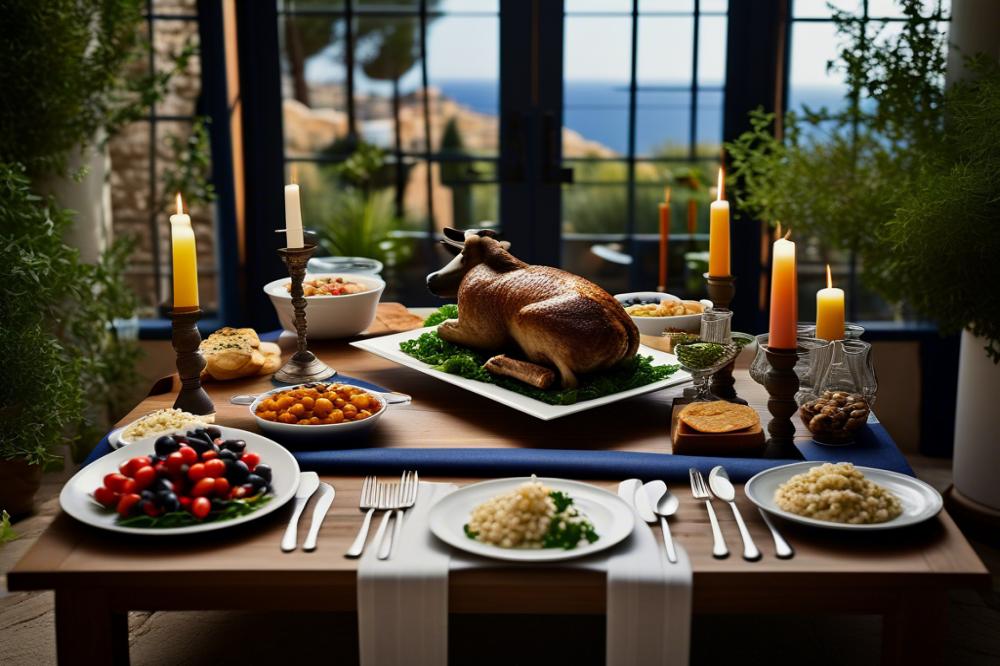
Slow-cooking is the heart of preparing this authentic dish. Traditionally, lamb is marinated in a mix of herbs, garlic, and lemon. This infusion not only enhances the flavor but also tenderizes the meat. After marinating, the next step is unique. The meat, along with vegetables like potatoes and carrots, gets wrapped in parchment or clay.
The technique hails from the Mediterranean region. Cooking in a closed pit is essential for achieving that deep, savory taste. A pit is dug, and hot coals are placed at the bottom. The wrapped ingredients are then set inside. This method allows flavors to meld beautifully and the lamb to become tender over several hours.
When it comes to timing, patience is crucial. The slow-cooked process allows the meat to absorb the aromatic elements from the herbs and lemon. As it cooks, the moisture is kept locked in. This results in succulent bites that practically melt in your mouth.
A traditional Greek cuisine recipe like this invokes gatherings and shared meals. Families often come together to prepare and enjoy it. This communal aspect adds to the experience, making the meal even more special.
Adjustments can be made based on personal preference or regional differences. Some might add different vegetables or spice blends. Others may experiment with different sauces or marinades. Regardless of variations, the core method remains a cherished culinary tradition.
A Step-by-Step Kleftiko Recipe
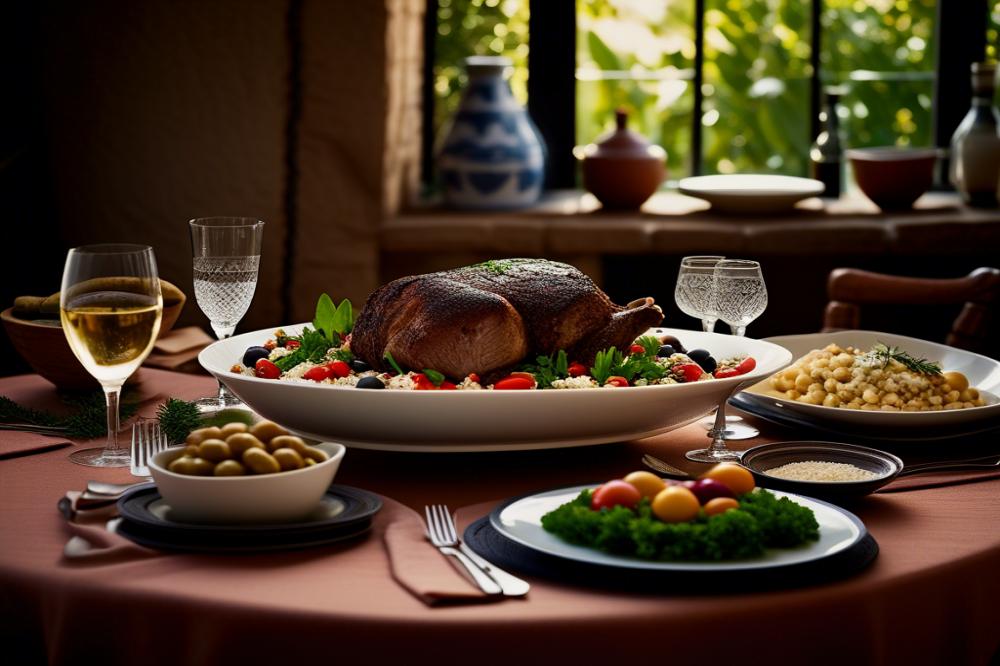
Making authentic Greek Kleftiko at home is a rewarding experience. This slow-cooked lamb dish is filled with flavors from fresh herbs and spices. Follow this recipe to create a meal that embodies the spirit of Mediterranean cuisine.
Ingredients
- 2 kg lamb shoulder, bone-in
- 4 cloves garlic, minced
- 2 lemons, juiced
- 1 cup olive oil
- 1 tablespoon dried oregano
- 1 tablespoon rosemary, chopped
- 3-4 medium potatoes, cut into chunks
- Salt and pepper to taste
- Aluminum foil for wrapping
Preparation
Start by preparing the marinade for the lamb. Mix olive oil, lemon juice, minced garlic, oregano, rosemary, salt, and pepper in a bowl. This mixture will create a rich flavor profile.
Make deep cuts into the lamb shoulder. This will help the marinade penetrate for maximum flavor. Rub the garlic mixture all over the meat, ensuring it gets into the cuts. Place lamb in a large bowl or resealable bag.
Cover and let it marinate in the refrigerator for at least four hours. Overnight marination is best for achieving tender meat.
Cooking
After marinating, preheat your oven to 160°C (320°F). While waiting, prepare the potatoes. Scatter the potato chunks at the bottom of a large baking dish. They will soak up the wonderful flavors while cooking.
Remove the lamb from the fridge. At this stage, place it on top of the potatoes. Wrap the dish tightly with aluminum foil, sealing in all the moisture. This step is essential for keeping the meat tender during the cooking process.
Bake in the preheated oven for approximately 3 to 4 hours. The lamb is ready when it is tender and falls off the bone. During the last 30 minutes, remove the foil to allow the meat to brown slightly.
Serving Tips
Once cooked, let the Kleftiko rest for at least 15 minutes before serving. This resting period will enhance the flavor. When ready, serve it up with the roasted potatoes and a sprinkling of fresh herbs on top for presentation.
Pair this dish with a Greek salad or some crusty bread for a complete Mediterranean experience. The combination of textures and flavors will impress any dinner guest.
Pairing and Serving Suggestions
When enjoying authentic Greek Kleftiko, side dishes can really enhance the meal. Roasted potatoes are a classic choice. Their crispy texture pairs beautifully with the slow-cooked lamb, soaking up the rich flavors of garlic and lemon.
A Greek salad is another essential accompaniment. Fresh tomatoes, cucumbers, olives, and feta create a refreshing contrast to the tender meat. This vibrant dish adds color and a healthy element to the plate. Consider drizzling some olive oil and a dash of oregano for added flavor.
For those seeking an extra zing, tzatziki is an excellent addition. This creamy yogurt sauce, flavored with garlic and cucumber, complements the Mediterranean essence of the meal. A spoonful of tzatziki brightens every bite, adding a cool finish.
Wines can elevate your dining experience as well. A medium-bodied red wine like a Agiorgitiko or a crisp white such as Assyrtiko will match the dish’s robust flavors. Each sip will enhance the taste of the lamb and the sides.
Serving Kleftiko is best done family-style. Present it straight from the oven, allowing guests to help themselves. The aroma alone is a treat. Use a large platter for the lamb and arrange the vegetables around it. This method brings a piece of Greece to your table.
Don’t forget to garnish with fresh herbs. Sprigs of parsley or a sprinkle of oregano can brighten up the dish visually. They also add an extra layer of taste that brings everything together beautifully.
Enjoying this meal is as much about the experience as it is about the food. Sharing stories and laughter over a plate of Kleftiko and its accompaniments creates lasting memories.
Culinary Travel Adventures in Greece
If you want to truly appreciate the art of Kleftiko, visiting Greece should be on your to-do list. Local tavernas serve up the most authentic versions of this slow-cooked dish. Fresh ingredients are key here. Many establishments source their lamb from nearby farms, ensuring it is tender and flavorful.
Start your journey in the charming villages of the Cyclades or Crete. These are renowned for traditional Greek cuisine. Seek out family-owned restaurants where grandmothers pass down recipes through generations. A good sign of quality is a bustling atmosphere filled with laughter and the scent of herbs and garlic wafting through the air.
Don’t hesitate to ask locals for their recommendations. They often know where to find the best meals. Many use simple ingredients like lemon and olive oil to complement the dish. The fusion of flavors can be truly mouthwatering.
Markets are also a treasure trove of experiences. Fresh herbs, spices, and local produce fill the stalls. Engaging with vendors allows for a deeper connection to the culture. Sampling olives or bits of freshly baked bread enhances the culinary adventure.
To immerse yourself, consider taking a cooking class. Learning from experts in their kitchens opens a window into their culinary secrets. You will find that cooking Kleftiko is more than just a recipe; it’s a celebration of Mediterranean traditions.
Remember to take your time and savor each meal. The slow pace of life in Greece reflects in its culinary delights. This lifestyle makes every bite an experience filled with history and love. So indulge your senses and discover the magic of Greek cuisine.
Reflecting on the Joys of Kleftiko
Creating an authentic Greek dish is more than just following a recipe; it is an experience that connects people to the heart of Greek culture. Preparing this lamb dish allows home cooks to explore layers of flavor and enjoy the sweet aroma that fills the kitchen. Sharing this meal with family or friends fosters a sense of togetherness that resonates deeply in Greek traditions.
Each step in the process can be a delight. Marinating the meat, layering vegetables, and wrapping everything in parchment paper bring excitement to the preparation. Cooking it slowly transforms the ingredients into a comforting masterpiece. Family gatherings become more special when a dish like this takes center stage, inviting everyone to dig in and savor the flavors.
Greece’s culinary heritage is rich and inviting. By attempting to make a cherished dish at home, you embrace a part of that culture. Diving into these recipes offers a chance to understand and appreciate the ingredients and techniques that have been passed down for generations.
Lastly, the pure enjoyment of savoring each flavorful bite cannot be overstated. The tenderness of the lamb, the richness of the spices, and the freshness of the vegetables combine beautifully. Encouraging everyone to try their hand at this beloved dish opens up opportunities for joy and connection through the art of cooking. Isn’t that what food is all about?

